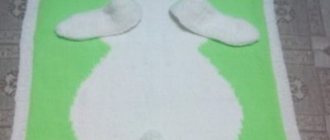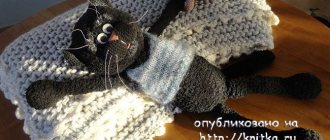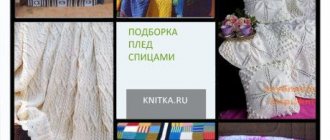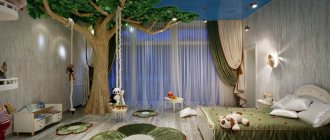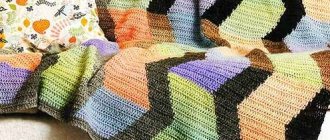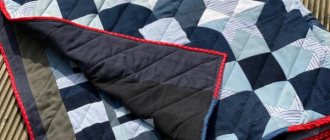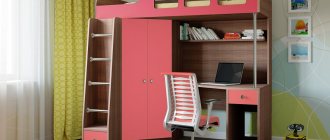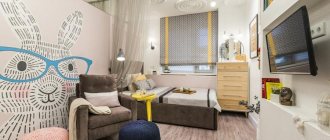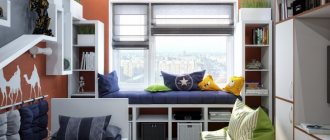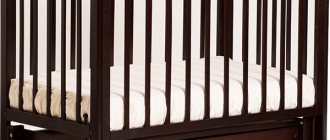Peculiarities
With the birth of a child, a lot of new troubles appear in the lives of parents, so many manufacturers are coming up with ways to make their work easier, including by making blankets for different situations.
Let's take a closer look at the models of children's bedding that can be found on store shelves and online sites.
- A regular blanket for a newborn. A classic square or rectangular bedspread that can be used as a blanket, bedding or sheet.
- Envelope. This bedding is equipped with special fasteners (zippers, Velcro or buttons) that give the product the shape of an envelope. The model allows you to easily and quickly wrap your baby in a warm cloth - this allows parents to save energy and time.
A blanket envelope is great for leaving a maternity hospital or another occasion, because such products look aesthetically pleasing and festive.
- Transformer. The model is a classic blanket, which comes with a special belt. The product can be used as a classic blanket, or you can also wrap your baby in an envelope and secure it with an elastic belt.
- Model with a hood. This blanket is used to wrap a newborn in an envelope, because the hood is located in the corner of the product. The blanket can be equipped with a clasp or complemented with an elastic belt.
If you choose the right bedding, they will protect the baby and make the parents’ work a little easier, because wrapping a newborn quickly and securely is not so easy.
Which yarn is better
If you still haven’t decided which threads to buy for knitting children’s clothes, interior items, men’s or women’s clothing, listen to our recommendations. After comparing the characteristics of different manufacturers and studying the positive and negative reviews of needlewomen, we can draw conclusions:
- YarnArt. It has a large selection of shades, quality, hypoallergenic. Users note the ease of knitting.
- Pekhorka. High quality products with the required density. You can choose threads that differ in texture, color, and texture. Variety of shades.
- Alize. High quality. In manufacturing, the manufacturer uses innovative technologies.
The rating of the best yarn for knitting in 2021 will help you choose from the large assortment on the market exactly those threads that will meet your wishes.
Materials used
When making things for newborns, both natural and synthetic materials are used. Unless the product is used exclusively for “ceremonial” purposes - for example, for discharge from a maternity hospital, general requirements are imposed on it. The blanket should:
- Easy to wash - this will have to be done at least once a week.
- Freely allow air and moisture to pass through.
- Do not cause allergies.
- Do not pose a danger to the newborn. Thus, the fluff from which some models are made can get into the child’s nostrils and interfere with breathing.
There are many variations offered today. The most popular blankets are:
- cotton. Thin, light, practical. They use it both in summer and winter - if the apartment is hot. A cotton blanket can be beautiful enough to bring your baby home from the hospital in;
- fleece. Is it pure synthetic. It is elegant, protects from the cold, does not cause allergies, and is easy to wash. She doesn't need ironing. If you wrap a newborn in such a blanket, you can walk with him not only on cool summer days, but also in autumn and spring;
- woolen. Pure wool - camel, goat or sheep - is rarely used. This product is expensive and needs to be cared for with care. Woolen items will keep you warm, but the child may overheat in them. In newborns prone to allergies, wool often causes unpleasant symptoms. Much more often they use yarn for knitting, where natural wool is combined with synthetic acrylic. Such models are cheaper, more practical, and look very elegant. Read more about wool blanket;
- velor. Synthetic velor looks very beautiful. It resembles velvet, has a rich color, is soft to the touch, and does not cause allergies. Can be used in warm seasons;
- flannelette. A wool blend, wool or cotton flannelette model is an excellent choice. You can go out for a walk with your baby in this blanket. Place it in the playpen or on the floor as a blanket when the baby begins to crawl. It's easy to care for a baize; even in Soviet times, such blankets were in great demand.
Often the industry produces products from mixed materials that complement each other. Natural fibers in them coexist with synthetic ones. This reduces prices on models, provides the items with a beautiful appearance and ease of care.
Types of yarn for knitting a blanket
Natural wool:
- Merino wool.
Merino yarn is wool that is sheared from the withers of sheep of the same breed. This wool is very highly prized because the hair of this sheep is long, white, incredibly elastic and heat resistant. Other fibers are sometimes added to merino yarn, but only to reduce the price. In other cases, this is not necessary, since merino wool does not irritate the skin, and even children's clothes can be knitted from it.
Merino wool is suitable for knitting children's products
There are also disadvantages: products made from merino yarn require special care: only hand wash, special detergents and drying flat on a horizontal surface.
- Alpaca wool.
Remember the funny llamas that are increasingly becoming popular characters in children's books? So, we will talk about their wool. Now this is a fairly popular type of yarn, but it is far from cheap. Alpaca wool is light and durable and hardly mats. An item made from this wool will look like new for a long time, and you won’t need a machine to remove the pellets. In addition, it warms very well and is perfect for a warm blanket. It will be easy to decide on a design, since alpaca wool dyes beautifully, and there are colors to suit every taste.
Cons: 100% alpaca wool yarn is expensive, and this blanket will cost you a pretty penny. Also, natural fiber is very scratchy. You can avoid these shortcomings: to do this, choose yarn not made from 100 percent alpaca, but a blend with the addition of acrylic or merino wool.
Alpaca wool is a favorite delicacy for moths, but mothballs cannot be used as a repeller, only natural remedies: lavender, cedar and tobacco.
- Mohair.
Mohair is a yarn made from the wool of Angora goats, incredibly soft, fluffy, hypoallergenic and at the same time durable and wear-resistant. Mohair items can withstand many washes and remain as fluffy and shiny as ever. This type of yarn is perfect for beginner knitters, since the threads are thin and elastic, the product turns out voluminous and fluffy, and when knitting it is easy to notice and correct mistakes. In addition, the fluffy fabric will hide the unevenness of the knitting.
Mohair yarn has hypoallergenic properties
The downside is the price. Yarns with a high mohair content are expensive. But a high content is not necessary; 10–20% mohair in the product is enough to make it fluffy and shiny. It is not recommended to knit a mohair blanket for newborns.
- Angora rabbit wool.
As fluffy, soft and warm as mohair. Angora yarn weighs little, so you will need very little of it. But this is provided that you use pure wool, without impurities.
If you are knitting a blanket, we do not recommend using pure Angora wool. One of the disadvantages of yarn is that it quickly peels off and pellets appear; such a blanket can only be used on special occasions.
Synthetic:
- Acrylic threads.
This is a synthetic material that should not be written off. The blanket can turn out to be as warm as a woolen one, but it won’t feel itchy at all. This product is easy to care for: you can wash it in a machine and dry it as usual. Such a blanket will last a long time, the color will remain the same, and the appearance of pilling is practically excluded.
The cost can also be considered a plus; acrylic threads will cost you much less than others.
The downside is that not everyone likes artificial materials. And under a 100% acrylic blanket it can even be very hot, since it conducts air poorly, like any other synthetic material.
- Nylon.
Its properties are similar to acrylic. It is better not to use 100 percent nylon for a knitted blanket; choose a blended yarn that contains nylon. It will significantly increase strength and wear resistance, and also reduce the cost of the product.
- Microfiber.
Although it is a synthetic material, it has good breathability. If you want to knit a beautiful blanket with decorative patterns, microfiber will be a great helper. Microfiber fibers are 40 times thinner than wool, so making a pattern will be easier. Also, microfiber products, unlike wool ones, do not shrink. But there is an annoying drawback: after several washes, the blanket may begin to fluff. And it will no longer be possible to give it its original appearance.
Microfiber is suitable for knitting a beautiful blanket with decorative patterns
- Blended yarn.
Perfect option. A combination of the best qualities of natural fiber, reinforced with synthetic additives. This blanket will last a very long time. In addition, yarn made from mixed materials is cheaper than natural yarn, but at the same time retains all the best qualities.
Do you want an unusual blanket? Then use non-standard yarn: boucle, with sequins and lurex, pile. Of course, in this case you won’t be able to use the blanket in everyday life, but as a gift it’s what you need.
Design
Newborns are just getting to know the world, so even the smallest irritant can cause negative emotions in them. Kids show different reactions to the color of bedding, so you need to choose the shade and pattern very carefully.
First of all, observe the baby’s reaction to different colors, and only then how fashionable this shade of fabric is. The best choice for a newborn is a plain bedding set in pastel shades.
Suitable colors for a baby crib are white, beige, yellow, blue and light pink. For kids, you can buy blankets with simple designs that match the main fabric: for a boy, a product with images of airplanes or cars is suitable, and for a girl, one with flowers or butterflies. You can also choose a unisex bedspread if you don't yet know the gender of the baby - with hearts, animals or paw prints.
Bright colors can affect a child in different ways - red will arouse interest and interfere with sleep, purple and blue will upset, and dark shades can frighten. To make a newborn feel comfortable in the crib, it is better to choose blankets in light shades with a soft pattern or design.
Dimensions
The parameters of a baby blanket must be selected in accordance with what it will be used for - for a crib, stroller or wrapping a newborn. Let's take a closer look at which blanket size is best for different situations.
- For wrapping in an envelope. Square blankets are best for wrapping a newborn. For this purpose, you do not need a blanket that is too large, because excess fabric will only complicate the task. The most convenient models for wrapping are 80x80 cm or 90x90 cm.
- For rocking cradle. There is very little free space in the rocking cradle, so the blanket should not be large. The standard size of a sleeping place in such a product varies from 35x70 cm to 50x90 cm; a suitable blanket for such dimensions is from 70x90 cm to 95x100 cm.
- For a stroller. The size of the stroller is usually slightly longer than the bassinet, and the width is approximately the same. The best choice for a stroller would be narrow and long blankets - from 75x100 cm to 90x120 cm. You can also use square blankets, which are convenient to wrap your baby in.
- For the crib. Most often, cribs are produced with dimensions of 70x100 cm; the blanket should not exceed these parameters by more than 30 cm. Bedspreads measuring 90x100 cm, 100x100 cm and 100x120 cm are suitable for this purpose.
Newborn babies grow very quickly - after 6 months a tiny blanket 90x90 cm can become small. The best option is to purchase two blankets: the first is small and light, if the baby was born in the summer, and the second is a little larger and warm, so that the older child has something to wrap in the winter.
Yarn rating
When compiling the TOP, we studied customer reviews, as well as forums of needlewomen, to understand what threads they use most often for knitting. When compiling the rating, the following characteristics were taken into account:
- Ingredients: natural, vegetable, synthetic, mixed.
- Torsion. The denser the thread, the better the product holds its shape.
- What are you planning to knit?
- What technique will be used, choice of pattern.
- Thread thickness. The footage and consumption largely depend on this parameter.
After analyzing and comparing, the VyborExperta.ru project team selected the best options from well-known manufacturers in the categories: knitted, woolen, plush, cotton. The needlework threads presented in the rating are very popular among needlewomen. With their help you can create high-quality, beautiful products.
Incorrectly calculated blanket
If you end up with a large blanket, it will be inconvenient to use with a small child. It will not fit in a crib or stroller.
But a small cloth will not be able to completely wrap the child.
If you want to place a blanket in a duvet cover, you need to remember that in stores there is mostly a standard size.
A blanket for a newborn should be knitted close to standard sizes and all the features of its use should be taken into account.
Example:
For a standard baby cradle, the length of the product can vary from 1-1.2 m and a width of 70-80 cm.
In order for the child to sleep comfortably and the blanket not to slide off during sleep, the sheet can be made a little larger: 100*130 and the excess can be removed under the mattress.
The product size 90*130 cm is perfect for walking.
For summer walks you can use openwork knitting size 100*100cm.
Of course, each mother chooses the size of the blanket, based on her own wishes and capabilities.
Standard sizes of a blanket for newborns
Before you start knitting a product, you need to decide not only on the quality and quantity of yarn used, or the color and pattern of the blanket, but also on its size.
An incorrectly selected blanket size can cause the following problems:
- A baby knitted blanket that is too large will be heavy and will easily slide off the bed;
- a very small blanket will not be able to fully cover a child or wrap a newborn in a stroller;
- If you plan to put a duvet cover on the blanket, you need to keep in mind that it is only sold in standard sizes.
A blanket for a newborn should be knitted in a standard size, taking into account where it is planned to be used.
For example:
- for a crib measuring 60x120 cm, a blanket 120 cm long and 80 cm wide is suitable;
- To prevent the child from opening up, you can knit a slightly larger blanket, for example, 110x140 cm, and fold the corners under the mattress;
- for walks in the cold, it is best to knit a blanket 100x140 cm or a little larger;
- in summer you can use a square blanket 90x90 cm.
What size of blanket the newborn will have needs to be decided based on one’s own desires and preferences.
Benefits of knitted blankets
In addition to the warmth of mother’s hands and original design, a knitted blanket for a newborn has useful qualities for mother and baby:
- Will serve as a beautiful blanket in a baby's crib;
- It is convenient to use it on a walk and to cover the baby when he sleeps in the summer;
- A soft knitted blanket can be used as a pad between a mattress and a sheet. This coating will add softness and warm you in winter;
- Knitted blankets for newborns, knitted for discharge, will clearly highlight the child’s clothes with their originality and unusual texture;
- When the baby grows up and plays on the floor, such an item will turn into a comfortable rug.
Important! A knitted blanket for a newborn is made using simple knitting techniques, and the process does not involve arranging complex-shaped parts, so even a novice craftswoman can handle it.
Preparing for knitting
Before starting work, you need to choose a knitting method (knitting or crocheting), suitable threads and decide on the dimensions of the product.
How to choose knitting needles?
Long knitting needles of different thicknesses are suitable for different yarns and different patterns
Relatively long knitting needles - more than 80 cm - are best suited for a blanket for a newborn; the thickness should be chosen according to the yarn used - from No. 3 to No. 6.
There are a huge variety of techniques for knitting children's blankets, so the choice depends only on your taste and visual preferences.
Calculation of the amount of yarn
To find out how many threads you will need to knit a blanket, you need to first knit a square with a side of 10 cm and then wash it.
Important! Pre-washing a sample product is necessary to assess how the size of the blanket will change after it.
Next you need to do:
- Measure the side of the knitted square after washing and drying. Calculate how many such pieces will be in the finished blanket;
- Calculate the number of loops in order to know how many of them will need to be cast on for knitting;
- Unravel the square, after measuring the length of the threads that were used;
- Multiply the resulting figure by the estimated number of squares.
Important! If the package of yarn contains information only about weight and not about length, then the pre-knitted and washed square does not need to be unraveled, just weigh it.
Additional factors that can affect yarn consumption:
- thin threads are consumed more;
- knitting dense patterns requires an increase in the amount of yarn, openwork - vice versa.
So what to knit from?
If you knit a blanket for a newborn in the warm season, choose cotton mixed threads.
Openwork cotton baby blanket for newborns
If you need a warm blanket, pay attention to wool blend threads with the addition of acrylic.
Children's warm blanket with merino wool braids
For those who knit a blanket for a crib or for playing on the floor, we recommend children's acrylic.
Children's blanket knitted with a three-dimensional pattern
Now, armed with our practical advice, feel free to take up knitting.
Easy loops for you.
Schemes for newborns
A knitted product will serve more than one generation and will be preserved as a family treasure. The blanket will not only be a beautiful blanket, but will also warm the child in cold weather and protect from drafts.
This model is suitable for use at any age. The blanket is pleasant to the touch, soft and light. And knitting it with knitting needles will not be difficult because of the basic method of execution: a simple double-sided pattern of knit and purl stitches, as well as garter stitch for the sides of the product.
Knitting patterns for a blanket for a newborn are presented in the description. The product can be knitted as a decoration for discharge or presented as a gift to the baby.
Knitting explanation:
- L, I - front and back loop.
- R - row.
- P - loop.
When calculating the number of loops, the parameters of the product and repeat are taken into account. The usual size of a baby diaper is 80*80 cm, so they focus on it. It is important that the pattern is symmetrical, so loops are added to the repeats. The main knitting is 74 cm, one pattern repeat is 18 P (8 cm).
The double-sided element of the “cage” pattern consists of alternating L and I with a three-dimensional texture. The rapport is 18 p wide, 24 p long.
Execution in rows:
- 1, 3, 9, 11 - 9 L, 9 I.
- 5, 7 – 3 L, 3 I.
- 13, 15, 21, 23 – 9 I, 9 L.
- 17, 19 – 3 I, 3 L.
The pattern is repeated from 1 to 24 r.
Cast on the knitting needles 175 p and knit 11 p in garter stitch. The edge is decorated by knitting the front loop behind the back one. At 11 r, yarn overs are made to add loops. At the end of the work, the loops are closed.
To keep the blanket warm, it is knitted from wool or wool blend threads. Delicate care and attitude are important for a child. Therefore, pay attention to the indication of children's and cleaned threads. The composition should contain an admixture of acrylic, merino wool, “Baby alpaca” with the addition of microfiber. The thread should not be prickly or hard.
A detailed description and patterns of a knitted blanket for a newborn are presented in the master class. Standard fabric reaches 1-1.5 m in size. You will need 500 g of yarn, knitting needles with fishing line and a hook. Cast on 195 P and knit a garter stitch pattern. To do this, the first row will be L. In each row, the first loop is not knitted, but removed onto another knitting needle. Starting from the second row, knit L. Subsequent rows are similar.
Knit 330 r (75-80 cm) and close all the loops (two p are knitted together - you get one p, and add another 1 p to it and knit together until all p are finished). The finished blanket is tied around with a crawfish step. To do this, the hook is inserted into the last loop, picking up the thread, and pulled through the loop. A hook with one loop is inserted from front to back into the next loop, a thread is thrown over the hook and knitted through the loop. There are two loops left on the hook, knit them together.
The patchwork style is successfully used not only in sewing, but also in knitting - for this purpose, pre-knitted motifs with various patterns are combined into a single fabric. A children's knitted blanket is made in cheerful and bright colors. A simple scheme of alternating L and I will allow you to create a warm product in a short time. All squares are knitted separately and then joined into a single product. The dimensions of the future bedspread are 82*97 cm. Instructions for beginners on how to knit a blanket from squares are outlined in detail.
Tools:
- Acrylic yarn in blue, yellow and green colors.
- Knitting needles number 4.
The knitting density is 22 P and 30 R, 10*10 cm. The sides of the square should be equal and the same - 15 cm each. Cast on 34 P in blue, knit 15 cm in garter stitch and cover the P. The next step is to make a checkered square motif. Type 35 P with the main color.
Knitting in rows:
- 1 – dial 5 L, * 5I, 5 L. Repeat from * to the end.
- 2 – I.
- 3-4 - similar to the first two rows.
- 5 – duplicate 1 p.
- 6 – knit 5 L, 5 I, 5 L, repeat.
- 7 – L.
- 8−9 duplicate 6−7 rubles.
- 10 – reproduce 6 p.
From rows 1 to 10, similar knitting methods are performed - four times, and then from rows 1-5 once.
The next motif is a square with triangles. Cast on 33 loops and knit according to the pattern.
Sequence of work in rows:
- 1 – perform 1 I, *7 L, 1 I. Repeat from *.
- 2 – and all even ones are knitted I.
- 3 – knit 2 I, * 5 L, 3 I, copy from * to the outermost 7 P, 5 L, 2 I.
- 5 – dial 3 I, *3 L, 5 I, play from* to the final 6 P, 3 L, 3 I.
- 7 – do 4 I, *1 L, 7 I, repeat from* to the last 5 P, 1 L, 4 I.
- 9 – 4 L, *1 I, 7 L, duplicate from * to the final 5, 1 I, 4 L.
- 11 – do 3 L, * 3 I, 5 L, repeat from * to the last 6 P, 3 I, 3 L.
- 13 – knit 2 L, * 5I, 3 L, duplicate from * to the outermost 7 P, 5 I, 2 L.
- 15 – perform 1 L, * 7 I, 1 L, reproduce from * until the end of the row.
- 16 – I.
Duplicate rows from 1-16 twice more, then from 1-8 once and the loops are closed.
To create a speckled square, cast on 34 P. For the first row, knit L, for the second according to the pattern: 4 I, * 2 L, 4 I, repeat from * to completion. The third row is only L, and the fourth: 1 I, * 2 L, 4 I, copy from * to the final 3 P, 2 L, 1 I. Copy rows from 1-4 until the fabric reaches 15 cm. Upon completion of the loop are closing.
The next element of the blanket is a square motif with a raised elastic band. To perform it, cast on 35 P with a different color of yarn and perform it in accordance with the description.
Knitting rows:
- 1 – L.
- 2 – dial 3 L, * 1 I, 3 L, repeat from * to the end.
- 3−4 – duplicate from the first to the second row.
- 5 – L.
- 6 – perform 1 L, 1 I, * 3 L, 1 I, repeating from *, and finally dial 1 L.
- 7−8 - repeat from 5−6 p.
Duplicate from 1-8 p until a size of 15 cm is reached. At the end of the work, the row is closed.
For a square with zigzags, cast on 36 P and knit according to the pattern.
Sequence of rows:
- 1 – knit * 3 L, 3 I, repeat from * to the end.
- 2 and all even rows are knitted I.
- 3 – do 1 I, * 3 L, 3 I, similarly from * to the extreme 5 P, 3 L, 2 I.
- 5 - perform 2 I, * 3 L, 3 I, repeat from * to the last 4 P, 3 L, 1 I.
- 7 – knit * 3 I, 3 L, repeat from * to end.
- 9 – duplicate row 5.
- 11 – repeat row 3.
- 12 – I.
Copy the execution from 1-12 r until reaching 15 cm and close the loops.
The connection of the squares is made by stitching in accordance with the diagram. The edges need to be processed. To do this, turn the work towards you with the front side and knit 150 P along the top edge. All sides are tied in the same way. The product is ready, it just needs to be washed and dried.
Another option is a blanket or blanket made of multi-colored squares. It is important that the thread is the same thickness. The method of execution is a similar garter stitch. Knitting a blanket with knitting needles for beginners is not difficult, following the diagrams.
Models for any age
For older people, you can use the large method and knitting elements. The thickness of the product can be denser and more voluminous.
Multicolored plaid
Multi-colored blanket knitted using the spiral knitting technique
You will need long knitting needles, as well as yarn of three or four colors. If a product is knitted for a child, usually no more than twenty squares are knitted, each of which is about 17 cm in size.
Even a novice knitter can knit a chic multi-colored blanket with knitting needles in a simple pattern.
The whole point of knitting is alternating knit and purl stitches. For particularly large work, 3-4 loops are usually alternated.
Openwork
A product of this type is perfect for home because of its lightness and airiness, and the baby will definitely appreciate the beautiful patterns.
When choosing yarn, choose acrylic; the knitting needles should be the same as in the previous version. The finished blanket will be almost a meter by meter in size - this is its undoubted advantage.
Here you will also need a diagram: without it, it will not be possible to recreate elegant patterns.
At the beginning, you need to cast on 156 loops, after which you knit the first 7 rows using the “tangle” technique, that is, alternating knit and purl stitches in a checkerboard pattern.
Pattern based on which the “tangle” pattern is knitted with knitting needles
It is important to complete the eighth row in the following way: knit only the first and last 6 loops of the row with a tangle, and the remaining 144 simply purl. From the next row between the “sixes” - 1 front + 13 repeats of the second row according to the above scheme.
We knit the main part, edging the rows described in the pattern with six “tangle” loops on each side. Repeat the rapport 20 times, and when finished, make 7 rows, alternating stitches in a checkerboard pattern.
Beautiful children's blanket with a tangle pattern
For more experienced craftsmen, complex knitting techniques, such as relief patterns or braiding, are quite suitable.
Plaids using braids and plaits
In my opinion, using various braids and strands to knit blankets is always a win-win option. Moreover, such blankets are suitable not only for children, but also for general use, and will wonderfully decorate and diversify the interior:
But you can also knit a blanket with braids not with a solid fabric, but from strips, and then connect them in different directions:
Relief patterns
Using only knit and purl stitches, you can knit a children's picture on different themes. You can come up with many options for the product yourself, carefully selecting a pattern for certain threads. If you like a two-color pattern, but it is intended for embroidery, then you can try knitting it using the same knit and purl stitches.
In this example, using only knit and purl stitches, it looks like a massive weave. The density of the product will also depend on the quality of the threads.
Pattern diagram:
- row: *k3, purl 9*;
- r: according to the drawing;
- p: like the second;
- p: like the second;
- p: like 2nd;
- p: like 2nd;
- r: p6, *k3, p9*.
The next five rows are knitted according to the pattern. And then, the pattern begins from the first row.
In order for the finished product to have a finished look, it should be tied to a rim.
This blanket for girls is knitted quickly and easily. There are no complex weaves in it, there is a heart and an asterisk. If you use blue or light green threads for knitting, then the product will be suitable for a boy.
The work begins with the edging, which is knitted with facial loops. After this, the front stitch begins, where the clouds will be knitted with purl loops. The pattern is very simple and one color is used.
When making the product, do not forget about the edging, which should be on both sides. Knitting children's blankets with knitting needles, if you have patterns and descriptions, is a very interesting thing. Young mothers who already have children show off their products and share descriptions of patterns.
Knitted blanket for a newborn boy: knitting pattern and description
Before you start knitting a blanket, calculate the size of the future product. First of all, you need to decide where the blanket will be used and how.
Tip: Do not knit a very large size blanket, as it will be heavy.
If you are going to knit a blanket for a newborn for discharge, then it should be of such a size that the baby can be wrapped in a blanket.
For example, a blanket measuring 80*120 cm would be perfect for a baby crib.
If you want to fold a blanket under the mattress so that the child does not open up, then knit it with a size of 110*140 cm. The same size is suitable for walking in a stroller.
A summer blanket can be knitted only 90*90 cm and this will be enough to cover a child.
A blanket for a newborn boy can be knitted from motifs. You will need 20 pieces, they are knitted in different patterns. Marine symbols fit perfectly into the theme of a boy’s blanket. You can knit a blanket using different colors of yarn, but for kids it is recommended to choose light shades.
Baby blanket “Cloud”
This blanket is ideal for babies born in the warm season. It will look great both in the stroller and in the crib, and it couldn’t be easier to knit! If you follow the description, you will receive a light blanket for a baby with dimensions of 70x86 cm, made with your own hands quickly and definitely exclusive.
You will need:
- white yarn of your choice – 450 g;
- circular sp. No. 3.5.
Required techniques:
- openwork pattern: follow the diagram below, on the cat. Only individuals are listed. R. in purl r., all p. and nak. knitting in purl R..
- We start the stitch with rapport, repeat the repeat, finish the stitch after the rapport, repeat this from rows 1 to 20 inclusive.
To make a pattern for the strap, we will need to cast on 6 stitches with knitting needles. 1st r: k3, k1, k3. 2nd, 4th, 6th, 8th and 10th row: knit. p. 3rd row: 3 knits, 1 yarn over, 4 knits. 5th row: 3 knits, 1 knit, 5 knits. Row 7: k3, 1 yarn over, k6. 9th day; K3, 1 yarn over, k7. 11th row: k3, knit 1, k7, “bump” 2 (k1, p1, k1, from p1, p1 and k1, *turn, remove 1 p., k4, repeat from * 3 times, then pull the 1st p. through the 5th - 2nd p. and remove from the knitting needle). Row 12: cast off 6 stitches, knit 6 stitches. Repeat from 1st to 12th row.
To begin with, we should cast on 159 p. and continue further with an openwork stitch, and 85 cm from the cast-on edge after the 4th or 14th p. n. close. Afterwards, for the strap we need to dial on 6 stitches and continue according to the corresponding y until it is equal to the perimeter of the blanket, then close the stitch. When all the parts are ready, all that remains is to sew on the strap and sew its short sides.
Children's blanket with hearts diagram with description
This blanket for newborns will be a little difficult to make, so it’s unlikely to be suitable for beginner knitters. It looks very unusual and beautiful.
Cast on 123 sts on knitting needles. Next. 12 rub. we knit plat.elm. Next, we begin to knit motifs according to the pattern.
We knit the gaps between the motifs with platinum knit. eight loops each. After the first row of motifs we knit 12 r. plat.elm and continue to knit motifs. The blanket with hearts is ready!
Choosing a pattern
Which yarn to choose for a children's blanket is, of course, important. But you need to choose the right pattern:
- If the thread of the yarn is even, then you can choose any pattern, but professionals recommend not making the knitting too lacy. Perhaps the baby's fingers will get caught in the large holes in the pattern and he will get confused.
- It is best to choose large patterns. If you are just learning to knit and have not yet mastered the patterns, you can combine yarn of several colors.
- Plaids with wide stripes or large checks look good. In this case, when knitting, alternate knit and purl stitches, and you just need to remember to change skeins of different colors. The result will be simply amazing!
Important! If you want to knit a blanket with large squares, you will have to use several skeins, a separate one for each square.
If you don’t know how to knit a beautiful edge pattern, and you don’t like the elastic around the edge of the bedspread, then you can simply knit the selected pattern and crochet the edge. If you do not pull the threads, the processing will be gentle and neat. Or you can simply decorate the edges with fringe.
What should you pay attention to?
When making a blanket for a child, you should take note of a few tips:
- a product that is too voluminous is not always convenient for babies (you should not put animals and toys on the blanket, which will increase its weight);
- Do not overload the blanket with an abundance of patterns and decoration: it is ugly and deprives the product of its beauty and sense of style;
- embroidery on knitted fabric flattens the texture of the material;
- You should not decorate the edges of the blanket with a thin thread for knitting napkins: the pattern will not be visible if it is not starched;
- It is preferable to choose a symmetrical drawing of the model: this way it will look harmonious and complete;
- a pattern made from remnants of yarn of different textures can disrupt the integrity of the fabric texture, which will affect the appearance of the blanket;
- a small contrasting pattern provokes the appearance of ripples in the eyes: this will become an irritating factor and can cause a negative attitude towards the product.
To turn a thin fabric into a full-fledged blanket, you can make a textile lining (for example, fleece). By combining with the fabric, the blanket becomes warmer and can be used as a full-fledged blanket.
Best Plush Yarn
The most delicate material for knitting. Incredibly soft and hypoallergenic, properties that a good baby yarn should have. Used for knitting toys and things for babies. Having studied the reviews and recommendations of needlewomen, the VyborExpert.ru team identified two items of the best plush yarn.
Alize
Plush thick threads for knitting from a Turkish manufacturer consist of high-quality 100% polyester, which has hypoallergenic properties, holds its shape perfectly, and retains its rich color for a long time. Used for children's things, blankets, toys.
Fluffy thread, gathered into loops of the same size, forms an even, soft fabric that is pleasant to the body. The products are dense, light, and incredibly soft. For work, it is recommended to use knitting needles No. 3-5, hook No. 2-4. A skein weighing 100 grams contains 9 m of plush thread.
Advantages:
- Large assortment of shades.
- The pile does not roll down.
- The yarn does not fade.
- Hypoallergenic properties.
- Pleasant to the body.
Flaws:
- Synthetics.
- Small footage.
Knitted plush products cannot be machine washed. It is not recommended to twist it, otherwise the canvas will lose its shape.
YarnArt
Plush yarn made from 100% polyamide. The thread is evenly covered with soft, silky, dense pile. Both visually and tactilely imitates fur similar to mink wool. Recommended for knitting outerwear, pillows, toys, blankets, and interior items.
The palette is small, mainly consisting of beige, pink, and blue shades. These threads make warm, effective children's jackets. For work, it is recommended to use a hook No. 6.5, knitting needles No. 6-7. The weight of the skein is 50 g. The length of the thread is 75 m.
Advantages:
- Large selection of shades.
- Imitates fur.
- Hypoallergenic.
- Thick, voluminous thread.
- Good footage.
Flaws:
- Synthetics.
- When knitting, the loops are difficult to see.
The pile of plush threads falls off when unraveling, which affects the appearance of the re-knitted product. Even after frequent washing, plush products do not lose their shape.
Photos of blankets for a newborn
Sources- https://o-krohe.ru/pledy-i-pokryvala/dlya-novorozhdennyh/
- https://weqew.ru/postelnye-prinadlezhnosti/pled/dlya-novorozhdennogo-2
- https://podelki.expert/pled-dlya-novorozhdennogo-foto/
- https://kpoxa.info/raznoe/vyazanyj-pled-novorozhdennogo-vypisku.html
- https://berkem.ru/tekstil/vyazhem-detskij-pled-spicami/
- https://natrukodel.ru/vyazanie/pled
- https://vivatvyazanie.ru/idei-dlya-detskih-pledov-spitsami/
- https://hendmeid.guru/vyazanie/detskiy-pled
- https://larecmasterici.ru/vyazanie/pled-dlya-novorozhdennogo-vyazhem-spicami-dlya-malchika-i-devochki.html
- https://osp-sakhalin.ru/bolezni/razmer-pleda-dlya-novorozhdennogo-spicami.html
- https://kidbooms.ru/opisanie-pleda-dla-novorozdennogo-spicami-podrobnaa-shema-vazania-dla-nacinausih-s-posagovymi-foto/
[collapse]
